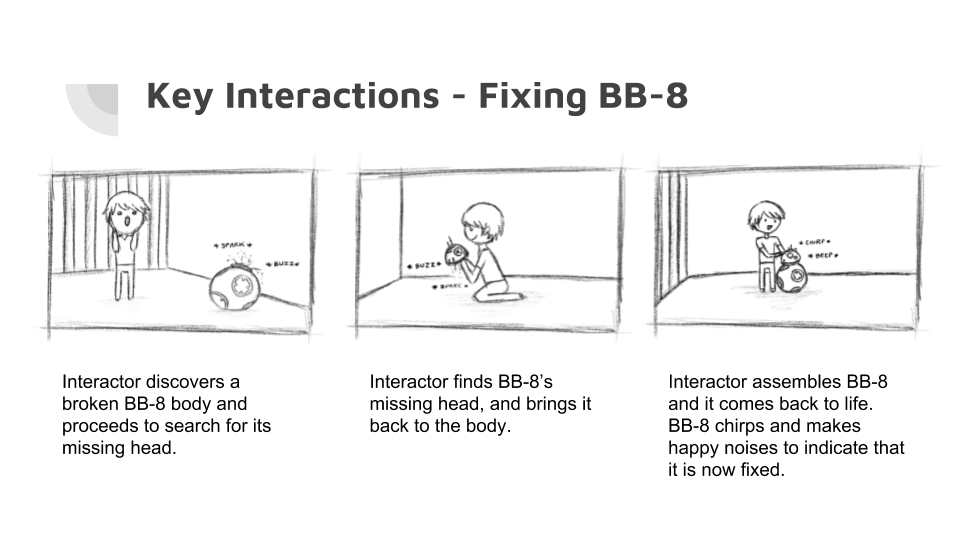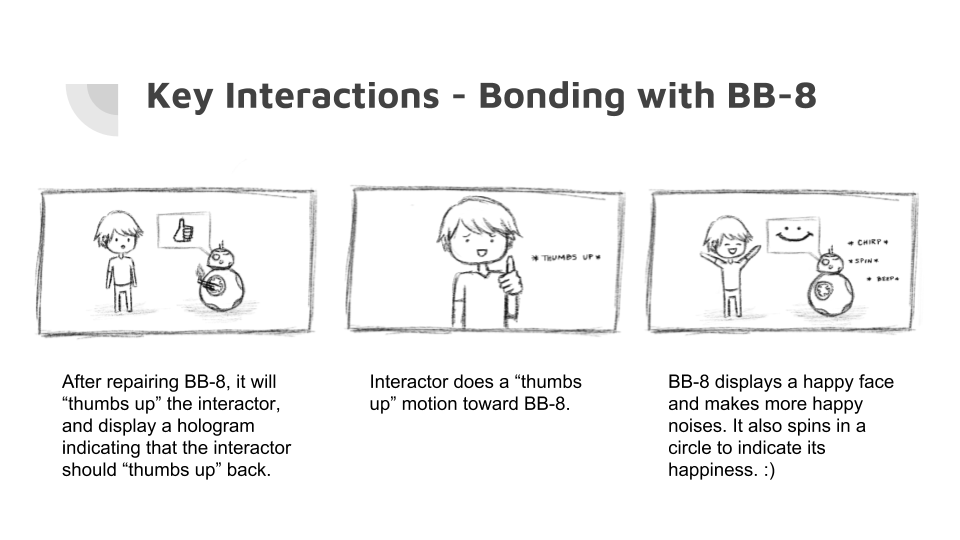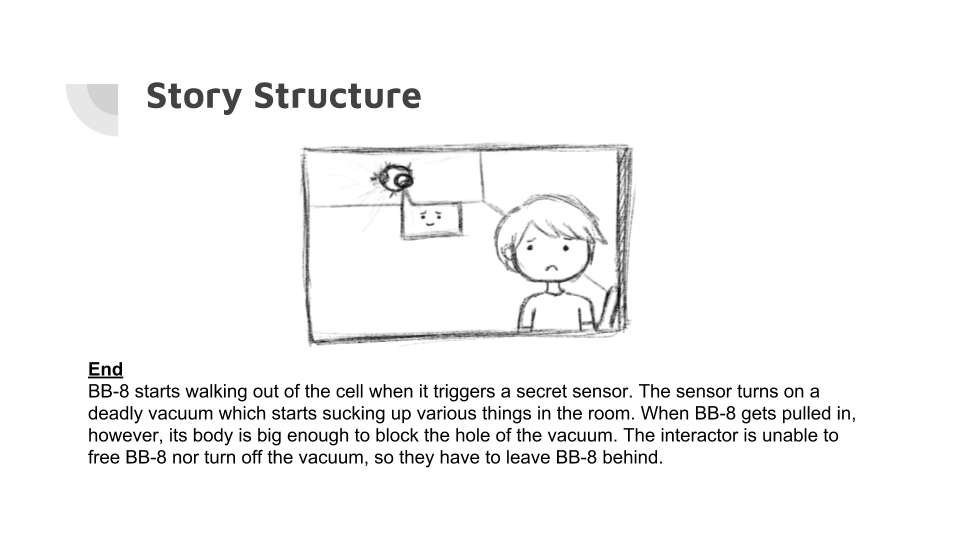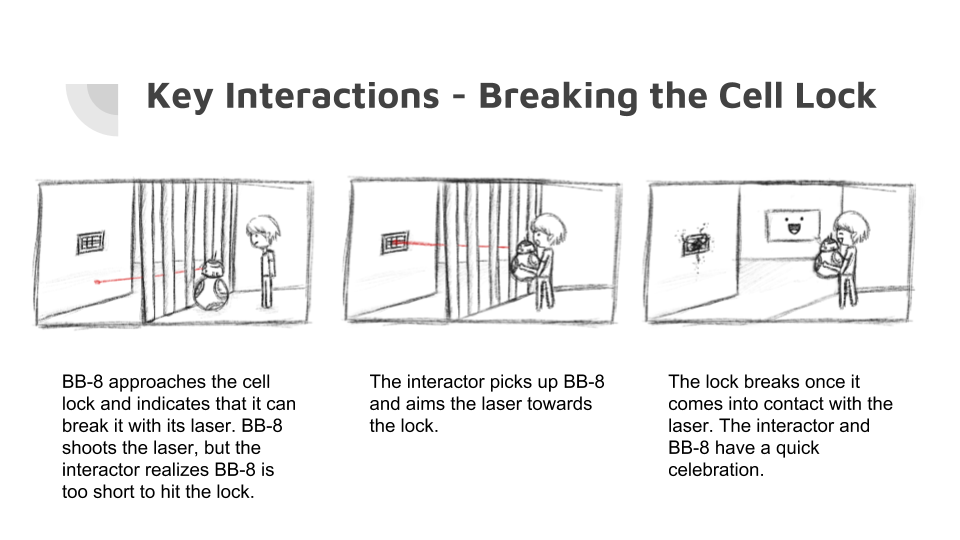Building Escape Room In Virtual Reality
Building an escape room and the companion to escape with on Virtual Reality
At Glance
Length
4 months
Tools
Sketch, Unity, Photoshop, Blender, Oculus Rift
Role
Usability Research, Prototyping, Storyboard (Group Project)
Overview
“Star Wars Escape” is a Virtual Reality room escape game built to explore the popular room escape game inside of virtual reality for the customers who don’t have experience in both. To do this, our group implemented segmented room architecture, more straightforward gestures, and a virtual character that helps them to follow a storyline as well as build a bonding relationship.
Defining Pain Points
As our teammates decided to implement the room escape game inside of the virtual reality, we decided to research both and set pain points we targeted to solve. To do this, we searched online resources and observed the frustrations as our colleague, who had never used Oculus Rift, tried to figure out the controllers and gameplay.
Pain Points
A traditional room escape games have many rooms to explore and move around. With Oculus Rift which has limited walkable space and a wire connected to a computer, designing the area gets very tricky.
Having a wire at the back can be a distraction. Customers can easily touch or tangle it when they move actively.
Oculus Touch controllers have some unfamiliar button structure even for traditional gamers. Customers usually spend some time getting used to these, which may interrupt their immersive virtual reality experience.
Proposed Solution
The game map design was crucial to solving the first and second pain points. What I came up with was to have three different areas that overlap each other and place these around the VR space. By doing this way, we could limit customers not to go out of the capable area, efficiently organize puzzle elements based on the pathway, and make sure the chance of them stepping on the wire would be minimal.
To solve the third pain point, we discussed puzzle mechanics and decided to implement gestures like grabbing and lifting. For these, we chose to use only a trigger button on each controller. Teaching them that there's only one button to interact would minimize confusion and learning curve.
Bringing Compassion through story
After setting the proposed solutions, we focused on the virtual character. It was essential for us because we wanted it not just to help customers guide, but build a relationship with players.
I worked on possible character design, and the general storyboard. Here are few:
The character should be cute and supportive. We scoped different roles and felt like BB-8, a robot from the Star Wars movie, would be a perfect fit since the character in the film is also supporting main characters.
After deciding the character, we naturally picked the Sci-Fi scene as an overall theme. To emphasize the storyline and keep the gameplay tension, we imagined the storyboard that started inside of the jail cell and players and BB-8 tried to escape the cell together.





Building Puzzles
We wanted players to interact with the companion to build compassion for the end. Hence, BB-8 is the key for every puzzle. Starting from fixing BB-8, we created interactions involving both hands to solve puzzles. When lifting BB-8, players can only lift him using both hands. Otherwise, we implemented the controllers to vibrate hard to mimic the weight of him.
Usability Testing
During our design and development, we performed the usability testing on eight participants. Using ten-minute session for each, a participant spent five minutes playing the game using a “Thinking Aloud” method. As they play, we observed their behavior and helped them when they got stuck as we jot down notes. after the gameplay, we asked questions like these:
How was the experience of assembling BB-8?
Was it clear that you had to pick up BB-8 to destroy the control panel and escape?
Did you understand what BB-8 was doing after escaping the cell?
What do you think about BB-8's sound?
We gathered the feedback and used it to improve the gameplay and storytelling.
Final Prototype
After a few iterations, this is the final work of our “Star Wars Space.” Our goal was to bring compassion to BB-8 throughout the game, create the space that utilized physical and limited space, and place puzzles that felt natural even with Oculus Touch controllers.
Achievements
Our project was selected to showcase at the Oculus campus in Menlo Park, CA in April 2018. Two team members, including myself went there and interacted with Oculus employees and other students and professors who shared a similar interest in Virtual Reality.
Our finished project was also featured during the Georgia Tech’s GVU Center Research Showcase an April, demoed out finished project to the audience, and received the positive feedback.
Reflecting on Project
During the extensive four-month research and design, I learned how to cooperate with other designers and developers as a team, use Unity for VR development, and VR design for gaming. If I have more time and resource, I would want to expand the map and add more puzzles to build deeper compassion between players and companion robot.






